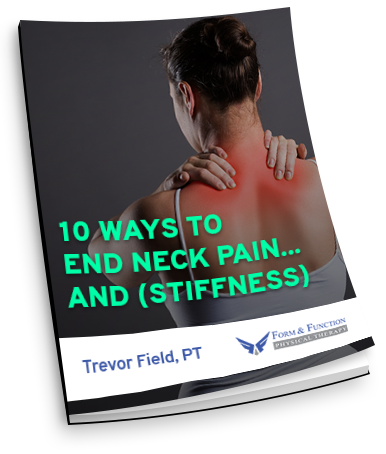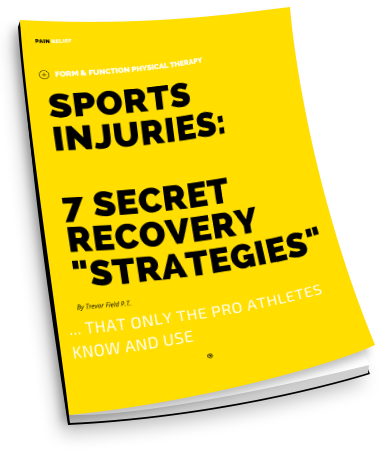2021 is finally here and the New Year’s resolutions are underway. January is the time where many begin to grab the old pair of sneakers from the shoe rack, the training clothes buried deep in the closet, and a light sweater to stay warm. Finally, with the perfect up-beat music playing, the running begins – up, down, and all around the neighborhood to “run off the weight” to claim resolution success.
Running as a tool for weight loss is a common resolution for many across the United States. Up to 47 million people select joggi
Unfortunately, this is a common theme among new runners. Research estimates that up to 80% of runners will sustain an injury each year. That means 8 out of 10 runners will suffer an injury!
Plus, new runners are at greater risk!
Although this may sound discouraging, your weight-loss resolution does not have to end with injury! This guide will provide insight on the benefits of running and tips that will give you a better chance to be the 2 out of 10 runners that stay injury-free and succeed in losing weight.
The Benefits of Running, Simplified
1) Great for Burning Calories!
In comparison to other forms of exercise, running is one of the most efficient ways to burn fat! Running has been estimated to burn approximately 100 calories (80-140 calories) per mile. On average, 30 minutes of running burns 400 calories! If a person jogs for one hour per day, that person could burn close to 1.5 pounds of fat per week, though we don’t recommend starting there. Of course, nutrition and health aren’t as simple as a math equation; however, running can be very effective in weight loss with a healthy mindset and a consultation from a nutritionist.
The following is a list of other forms of exercise and approximately how many calories one would burn per 30 minutes:
- a) Running (9 min pace): 400 calories
- b) Running (10 min pace): 375 calories
- c) Swimming Laps: 375
- d) Circuit training: 300 Calories
- e) Football: 300 calories
- f) Stationary bike: 250 calories
- g) Yoga: 170 calories
- h) Walking: 150 calories
These estimations are based on the average adult weight of 155 pounds. If you weigh more than 155 pounds, you would burn more calories per 30 minutes of exercise (and if you weigh less, you’ll burn fewer).
2) It’s Affordable and Accessible!
Instead of having to shell out for a gym membership or purchase a pricey bike (some can cost as much as $5,000 for a good quality bike), why not just run? All you need is a pair of running sneakers, a shirt, and shorts. That’s it! For the luxurious runner, a running watch, ear phones, a running pouch, and a water bottle are all the extras to keep you motivated, nourished, and comfortable on your runs (or, as comfortable as you can be).
3) It’s Convenient
Although playing basketball or football can be fun, it takes a lot of time to coordinate getting all of your friends together. Plus, there are always those few friends that show up late, which keeps you from getting other things done. If you would rather go to the gym, you (probably) have to drive there, find parking, and fight with other gym-goers for equipment. During that time, you could have finished your 30-minute run! You just need to change clothes, perform a warm up, and run out the door (or walk to your garage to start the treadmill).
For the most part, running is accessible to anyone at any time (depending if it’s safe to run in your neighborhood during the night hours). Prep time can be as little as ten minutes, which includes changing into running clothes, warming up, and heading out the door.
TIPS FOR STARTING TO RUN AND AVOIDING INJURY!
Go to a running store to purchase your training shoes. We work closely with local running stores, so reach out to see who we recommend.
The shoes that have been sitting in your closet year after year have probably lost their support, and it is recommended to purchase a new pair of running shoes every 300-500 miles. Before going to the nearest sports store and purchasing the nicest looking pair on the shelf, it is best to go to a running shoe specialty store that can make the best recommendation for you. This will depend on the shape of your foot, foot strike pattern, weekly mileage, and surfaces you run on. Selecting the right footwear can keep you injury-free and running faster and longer (thus burning more calories).
Slow and steady finishes the run!
Often, we like to start the New Year strong and ready to accomplish our resolution. We tell ourselves, “this is my year” and, “if I run more, I’ll burn more.” We ramp up the speed and feel really strong the first week — only to feel pain in the knee or ankle the following week. Running at a comfortable and steady pace is important as you begin your training. Using “conversational pace” is an easy tool to determine if you’re running at a good pace. During a run, you should be able to hold a conversation with a friend or sing your favorite song quietly to yourself.
The more, the merrier!
It’s cold outside and the forecast predicts light showers for the rest of the week. Who wants to go out for a run with those conditions? This is where group accountability can help you push through the cold. A run buddy can provide that extra motivation to keep you running consistently (and vice- versa). All it takes is a reminder and a couple of motivating words. Plus, why experience the chilly, cold air by yourself when you can complain about it to a partner? Having a running buddy can be a powerful tool to keep you motivated and running (and help you use the conversation rule).
Gradually build your mileage.
From a weight loss perspective, the more you run, the more calories you burn. So, many of us want to start off running as many miles as we can. The issue is the body’s muscle tissue breaks down during exercise and then rebuilds during sleep and recovery. The rebuilt and fortified tissue is stronger and more adaptable to exercise. This process is gradual and must be respected. If a runner puts on too many miles too quickly, the rate of breaking down tissue will surpass the rate of recovery and lead to an injury.
So, how do you know if you are building up your mileage to quickly? Dr. Jack Daniles (the guy who has a PhD in exercise physiology, and not the weekend drink!) advocates for the 10% rule. His rule says you should increase mileage by no more than 10% per week. Anything over 10% is asking for injury. It is important to respect the body’s process if you want to keep running! At first, that might mean adding only half a mile to your daily run per week.
Check in with the running expert PT.
Every few thousand miles, it’s important to take your car to the shop to get it tuned up. The same applies to your body. Daily wear and tear can add up, whether it’s from working, exercising, caregiving, etc.; checking in with a physical therapist can be extremely beneficial to determine what muscles and movements need a tune up and whether you can use a change of tires (aka shoes). If you’re returning to (or starting) running, my recommendation would be to go in for a routine check up to ensure you are ready to hit the road!





